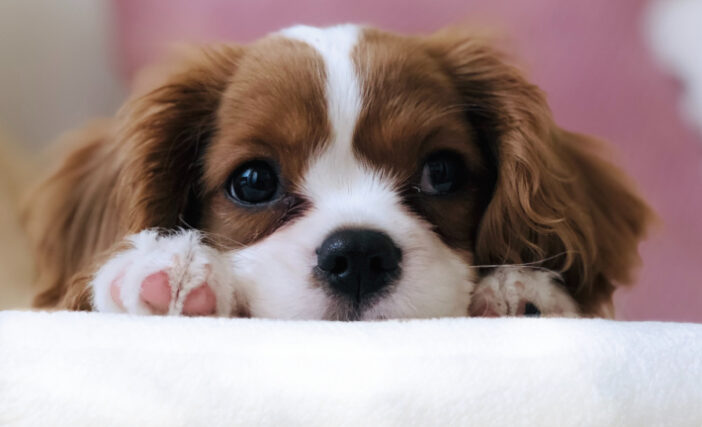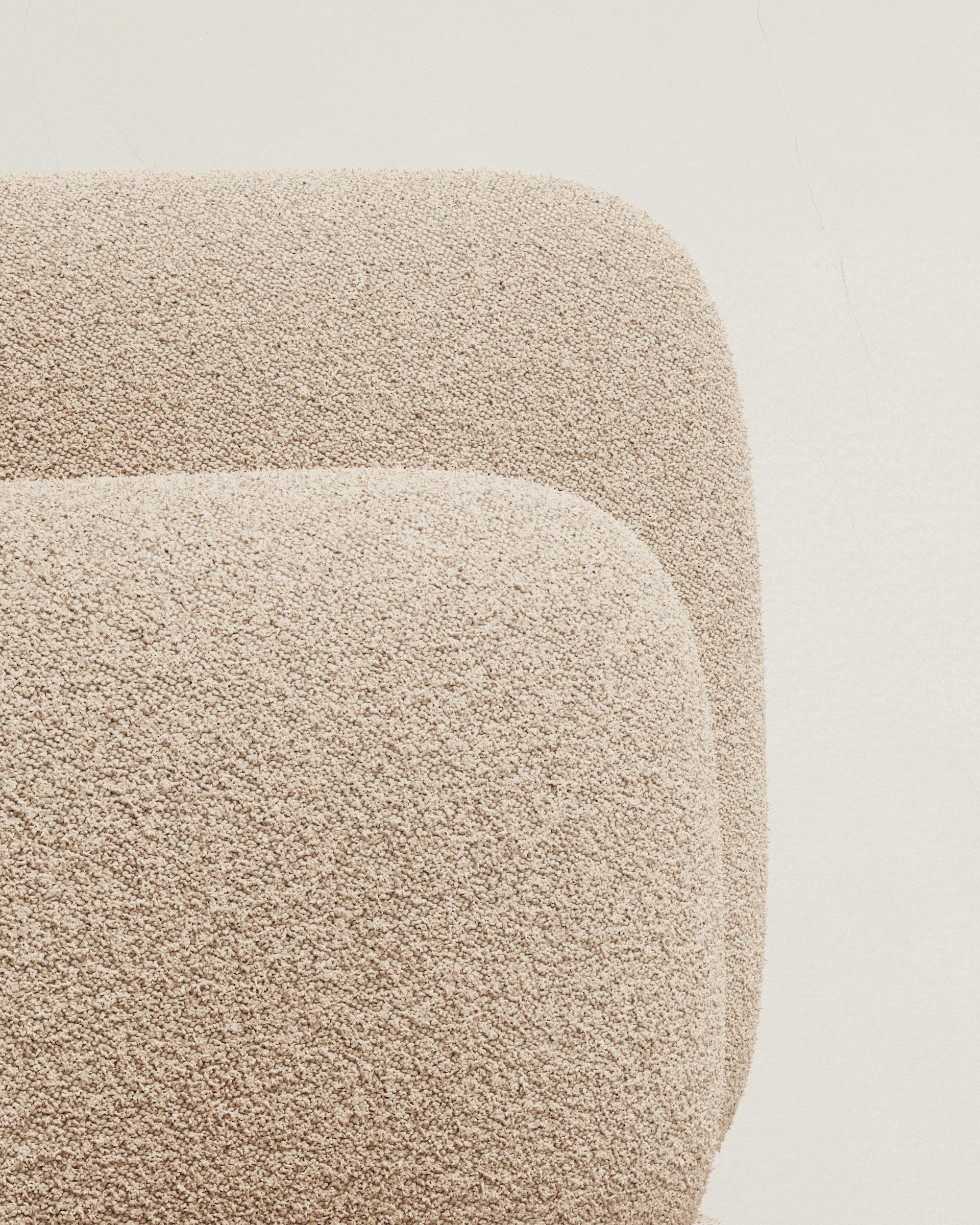Is Bouclé Fabric Pet Friendly? The Truth About Loops and Claws

Bouclé looks like a poodle and acts like velcro. Those loops that make it Instagram-famous? They're essentially thousands of tiny hooks waiting to catch every single cat claw, dog nail, and piece of ambient debris in your home. The fabric was invented in the 1940s by Coco Chanel, who presumably didn't have a labrador. Today, furniture makers charge an extra $400-800 for bouclé upholstery, marketing it as "textured luxury" while somehow forgetting to mention that texture is basically a playground for pet destruction.
Here's what happens: your cat sees bouclé and experiences the same neurological response as seeing a thousand dangling strings. It's not malicious. It's biological. Those loops trigger prey drive in cats and satisfy dogs' ancestral need to dig. The fabric might as well come with a sign saying "please destroy me recreationally." Yet somehow, bouclé has become the default choice for people who want their homes to look expensive, including the 67% of American households that own pets. The math doesn't work, but the market doesn't care.

The Loop Problem Nobody Discusses
Bouclé's construction involves yarns with loops of different sizes woven together to create that signature nubby texture. Commercial furniture-grade bouclé typically has 40-60 loops per square inch. Each loop has two potential snag points. That's 80-120 opportunities per square inch for your pet's claws to catch. A standard sofa has approximately 3,600 square inches of fabric surface. We're talking about 288,000 to 432,000 individual snag points on a single piece of furniture.
The loops aren't even the worst part. It's the spaces between them. Pet hair doesn't sit on top of bouclé like it does on smooth fabrics. It works its way into the negative space between loops, creating a permanent undercoat you can never fully remove. Vacuum cleaners can't reach it. Lint rollers just push it deeper. After six months, your cream bouclé chair has developed a subtle tabby pattern that no amount of professional cleaning will fix.
What Actually Happens: A Timeline
Week 1: The bouclé furniture arrives. It looks like it belongs in a Parisian apartment. Your cat circles it suspiciously. Your dog sniffs it thoroughly. You take seventeen photos for Instagram.
Week 3: First pulled loop appears. Just one. You push it back in place and pretend it didn't happen. Your cat has discovered that batting at the fabric creates a satisfying resistance.
Month 2: The pulled loops have friends now. They cluster in the spots where your pets jump on and off. The fabric has started pilling in high-contact areas. You google "how to fix pulled bouclé loops" at 11 PM.
Month 6: The bouclé has developed what interior designers politely call "character." What they mean is it looks like it's been through a textile shredder set to "artistic." The original loop pattern is now abstract art.
Year 1: You've either reupholstered, relegated the piece to a room pets can't access, or achieved a state of expensive acceptance. The bouclé has won by losing.
The Breed-Specific Reality
Different pets interact with bouclé in predictably different ways. Cats with that extra toe (polydactyl) are bouclé's worst nightmare - they have more claws and less precise control, turning every jump into a grappling hook situation. Persian cats, with their dense undercoats, shed fur that bonds with bouclé at a molecular level. That fur becomes part of the fabric's permanent texture, like it was woven in at the factory.
Dogs present their own challenges. Terriers, bred to dig out rodents, see bouclé as an invitation to excavate. Retrievers with their soft mouths still somehow manage to carry away individual loops like trophies. But the real bouclé destroyers? Puppies of any breed. They experience bouclé as a full sensory experience - pulling loops is fun, the texture feels interesting on their teeth, and the fabric makes a satisfying sound when they dig at it.
The only pets that coexist peacefully with bouclé are fish, and even then, the humidity from a large aquarium can cause the loops to relax and sag over time.
Material Grades and Survival Rates
Performance bouclé exists, engineered with synthetic fibers and tighter weaves. Crypton makes a bouclé that costs significantly more per yard and allegedly resists everything. In testing, it survives about 40% longer than standard bouclé against pets, which sounds impressive until you realize that's the difference between six months and eight months before visible damage.
The tight-loop versus loose-loop debate misses the point entirely. Tight loops snag less but pill more. Loose loops snag constantly but hide damage better. It's choosing between obvious destruction and subtle degradation. The yarn content matters more than loop size - wool bouclé pills into felt, synthetic bouclé pills into plastic-looking balls, and cotton bouclé just gives up entirely.
European manufacturers produce bouclé with a 50,000 to 100,000 double rub rating, which sounds bulletproof until you understand that pet claws don't rub - they pierce. A cat's claw exerts 70 pounds per square inch of pressure on a surface area smaller than a pin head. No civilian fabric is rated for that.
The Cleaning Situation
Professional upholstery cleaners charge 30-50% more for bouclé. Not because they're greedy, but because cleaning bouclé properly takes twice as long as flat-weave fabrics. The loops trap everything - pet hair, dander, that mysterious gray dust that appears from nowhere. Standard extraction cleaning pushes debris deeper into the weave. Steam cleaning can cause loops to shrink unevenly, creating a rumpled texture that looks like the fabric is disappointed in you.
The home cleaning reality: you need a vacuum with adjustable suction (too high and you'll pull loops), a specialty upholstery brush (the wrong brush catches loops), and infinite patience. Most people give up and buy throws. The throws inevitably slide off because bouclé's texture doesn't grip smooth fabrics, defeating the purpose entirely.
The Market's Cognitive Dissonance
Furniture retailers know the statistics. They know 67% of American households have pets. They know bouclé and pets are incompatible. Yet bouclé upholstery options have increased 300% in the past five years. West Elm offers bouclé on 40% of their upholstered pieces. CB2 features bouclé in every collection. Even Ikea, the champion of practical design, now offers bouclé covers.
The markup for bouclé averages 25-35% over standard upholstery. A chair that costs $800 in linen costs $1,040 in bouclé. Consumers pay extra for fabric that will deteriorate faster with pets. It's the furniture equivalent of buying white pants for a mud run, except the mud run lasts several years and lives in your house.
Vintage Womb chairs in original bouclé from the 1960s sell for enormous premiums, but here's the catch - they survived because they lived in estates where pets were forbidden or they were museum pieces. The survivor bias is staggering. For every pristine vintage bouclé piece, hundreds were destroyed by generations of family cats.
The fabric choices available to midcentury designers went far beyond bouclé. Designers experimented with unconventional materials from woven cane to molded fiberglass, prioritizing innovation over tradition. Bouclé's survival in that era had more to do with careful curation than inherent durability.
Alternative Textures That Actually Work
Velvet outperforms bouclé with pets by every metric. The pile direction means claws slide over rather than catch. Hair sits on top where it's easily removed. Modern performance velvets resist staining and crushing. Yet velvet reads as "trying too hard" while bouclé reads as "effortlessly sophisticated," so people choose aesthetic death over practical survival.
Crypton's plain weaves offer texture through yarn variation rather than loops. Mohair blends provide visual interest without snag points. Canvas and dense linens develop patina rather than damage. Even corduroy, bouclé's unfashionable cousin, handles pets better because the ribs run in one direction, giving claws a clear path that doesn't catch.
The actually pet-friendly fabrics that match bouclé's textural interest? Chenille (if you choose the right weave), wool herringbone, and high-pile microfiber that looks like sheep shearling. They cost the same, last longer, and clean easier. They're just not bouclé, and apparently that matters more than function.
The Truth About Living With Both
People who successfully maintain bouclé with pets fall into three categories: those with extremely elderly pets who barely move, those who've accepted destruction as a lifestyle choice, or those who've designated bouclé furniture as decorative objects that no one actually uses. The fourth category - people who claim their pets don't damage their bouclé - usually have cream-colored pets that match cream bouclé so perfectly that the accumulated fur and minor snags become invisible camouflage. It's not that the damage isn't there; it's that beige-on-beige hides all sins.
The real calculation isn't whether bouclé is pet-friendly (it's not), but whether temporary aesthetic perfection outweighs long-term functionality. Bouclé with pets means furniture becomes essentially a consumable with a three-to-five year lifecycle. At $1,000-$3,000 per piece, that's an annual furniture depreciation of $200-$1,000. Some people spend that on coffee. The difference is coffee provides immediate gratification, while bouclé creates immediate anxiety every time a cat extends its claws.
Vintage pieces that are already distressed change the equation - the damage becomes part of the story rather than a source of grief. The cheapest bouclé possible makes destruction less painful financially. Some people treat it as commissioning destruction art where pets are the artists and furniture is the canvas. But expecting bouclé to survive pets is like expecting ice sculpture to survive summer. Beautiful while it lasts, expensive when it ends, inevitable in its destruction.